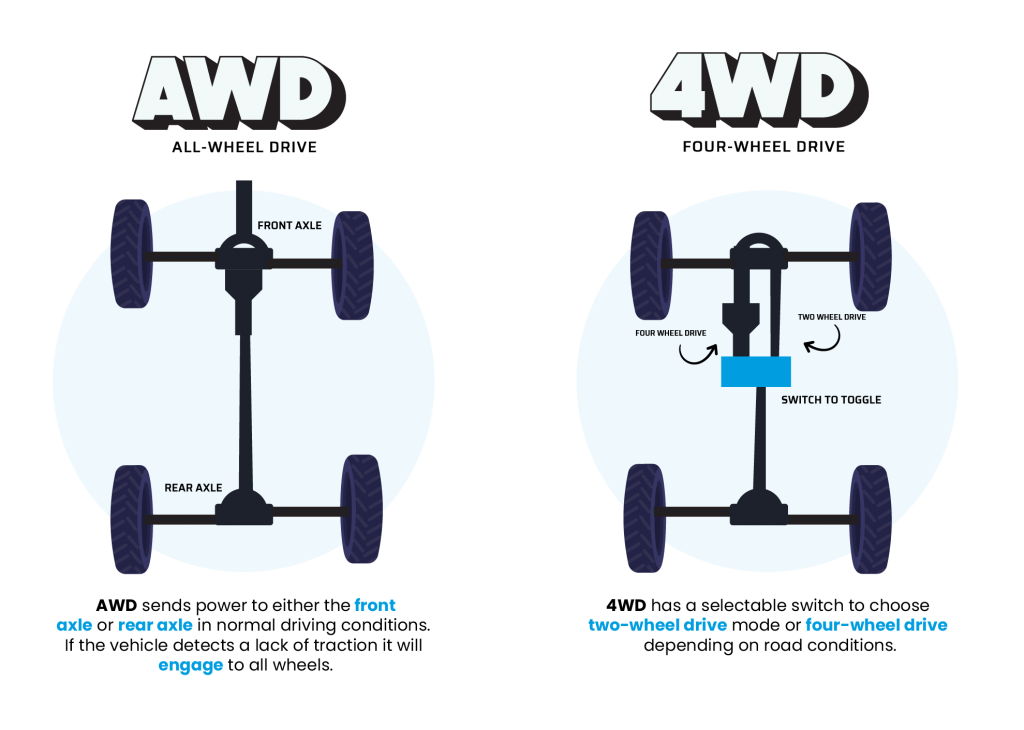
What is the Difference Between Four-Wheel Drive, All-Wheel Drive, Limited Slip, and Traction Control
Introduction
When it comes to understanding the various drivetrain systems available in modern vehicles, it can be easy to get confused. Terms like four-wheel drive, all-wheel drive, limited slip, and traction control are often used interchangeably, but they actually refer to different systems that offer varying levels of control and performance. In this article, we will explore the differences between these drivetrain systems to help you make an informed decision when choosing your next vehicle.
Four-Wheel Drive (4WD)
Four-wheel drive, commonly abbreviated as 4WD, is a drivetrain system that powers all four wheels of a vehicle simultaneously. This system is typically found in off-road vehicles and trucks. In a 4WD system, power is evenly distributed to all four wheels, providing maximum traction and torque. This makes 4WD ideal for off-road driving and situations where all wheels need to be powered to overcome obstacles.
4WD systems generally have a low range mode, which provides additional torque for extreme off-road conditions. However, it’s important to note that 4WD systems are typically part-time, meaning they are engaged manually by the driver when needed and should not be used on dry or paved surfaces for extended periods of time.
All-Wheel Drive (AWD)
All-wheel drive, commonly referred to as AWD, is a drivetrain system that continuously powers all four wheels of a vehicle. Unlike 4WD, AWD systems automatically distribute power to the wheels with the most traction, providing enhanced stability and control in various driving conditions. AWD is commonly found in sedans, SUVs, and crossover vehicles.
AWD systems are typically on all the time and do not require any input from the driver. They are designed to provide better traction on slippery or uneven surfaces, making them suitable for everyday driving in various weather conditions. However, it’s important to note that AWD does not offer the same level of off-road capability as 4WD, as it lacks the low range mode and dedicated off-road features.
Limited Slip Differential (LSD)
A limited slip differential, commonly known as LSD, is a mechanical device that helps distribute power between the wheels on an axle. LSDs are commonly used in performance vehicles and sports cars. The purpose of an LSD is to prevent excessive wheel spin and ensure that power is transferred to the wheel with the most traction.
When one wheel loses traction, an LSD will transfer power to the wheel with more grip, allowing for better acceleration and cornering. LSDs are particularly useful in high-performance vehicles, as they improve handling and stability during aggressive driving maneuvers.
Traction Control
Traction control is an electronic system that helps prevent wheel slip by reducing engine power or applying braking force to the wheels. It is commonly found in modern vehicles and is designed to improve traction and stability on slippery surfaces.
When a wheel starts to slip, the traction control system detects this and intervenes by reducing engine power or applying braking force to the spinning wheel. This helps transfer power to the wheels with better traction, allowing the vehicle to maintain stability and control. Traction control is especially beneficial in icy or wet conditions, where wheel slip is more likely to occur.
Conclusion
Understanding the differences between four-wheel drive, all-wheel drive, limited slip, and traction control is essential when choosing a vehicle that suits your needs and driving conditions. Whether you require maximum off-road capability, enhanced stability in various weather conditions, or improved performance on the road, each of these drivetrain systems offers its own unique advantages. By considering your driving requirements and preferences, you can make an informed decision and select the drivetrain system that best fits your needs.




